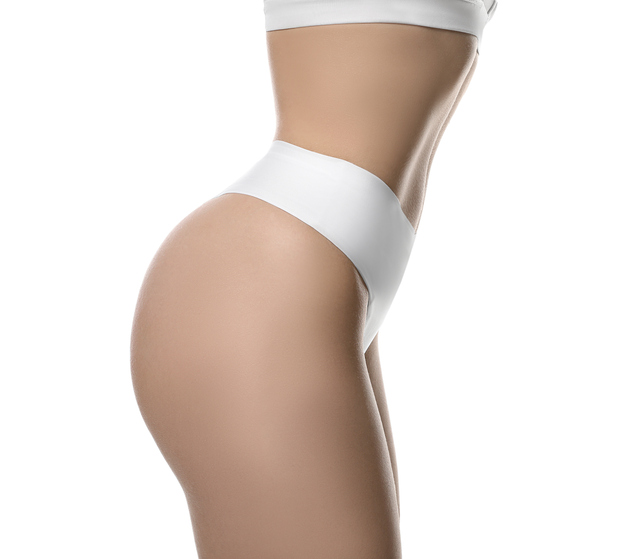Thigh Lift
Overview
 Time, gravity, and weight loss can cause the skin of the inner and outer thighs to lose tone and sag. Fat also can collect in the thighs, especially as we age. If you are like many men and women, weight loss and exercise have not helped to tighten all of the skin of your thighs. In fact, it can be very difficult to rid yourself of this excess fat and lax skin.
Time, gravity, and weight loss can cause the skin of the inner and outer thighs to lose tone and sag. Fat also can collect in the thighs, especially as we age. If you are like many men and women, weight loss and exercise have not helped to tighten all of the skin of your thighs. In fact, it can be very difficult to rid yourself of this excess fat and lax skin.
If you only have excess fat in the thighs, liposuction is probably enough to improve their contour. If you have loose skin on the thighs as well, you must have a thigh lift (thighplasty) to tighten the skin and create smooth, younger looking thighs. During the thigh lift, both skin tightening and liposuction are performed to reshape the area.
An inner thigh lift actually includes firming the entirety of the thighs, such as saddlebags and/or fat around the knees. An outer thigh lift is usually combined with a lower body lift and buttock lift—procedures that generally take more time and require a hospital stay.
If you intend to lose a significant amount of weight (10 or more pounds), you should postpone your thigh lift until you reach a healthy weight for your height. Otherwise, your thighs may lose tone again after the loss of weight.
At Summit Health, we have developed a set of protocols to limit the pain and discomfort from this procedure. These protocols involve providing medications before, during, and after the surgery, as well as optimizing our patient care. We also use Exparel, a long-acting advanced local anesthetic, which extends your comfort after surgery.
Some patients decide to have additional procedures at the same time for a more polished look overall, such as a lower body and buttock lift, and/or a tummy tuck. It is less costly to combine procedures, and often they can be done concurrently so that you have only one incident of anesthesia and one recovery period.
Ready to get started?
Thigh Lift Procedure
When you meet with us for your thigh lift consultation, we will have an honest discussion about your desires, expectations, and concerns, as well as the limits and risks of the surgery. We will review your medical history and recommend options that can best help you achieve your goals. We will give you thorough written instructions to prepare for your surgery and will answer any questions you have.
At Summit Health, the patient experience is of primary importance to us. We customize every single procedure we do so that it is tailored to what is best for you and you alone.
A thigh lift is an outpatient procedure that takes approximately 2 hours. A general or local anesthetic may be used, depending on the extent of your procedure. A thigh lift usually begins with liposuction, followed by the removal of excess skin. The length and location of the incisions is based on the amount of tissue that must be removed, lifted, and tightened.
For the liposuction portion, only a small incision is required. Through that incision, tumescent fluid is introduced first to numb the area and reduce the chance of bleeding, as well as to loosen and soften the fatty tissues. This expansion of the fatty tissue allows the liposuction instrument to travel smoothly as it is moved in and out from beneath the skin in order to suction out the fat. The surgeon then inserts a small tube called a cannula to mechanically break down the excess fat.
Excess skin is then removed, and the remaining skin is redraped, tightened, and sutured. The surgeons at Summit Health are highly experienced in thigh lift surgery and will do everything possible to minimize your inner thigh lift surgery scars. Often, the incision can be made in the groin crease to hide the scar. If not, we attempt to keep the incision in the back of the inner thigh where the scar will remain mostly hidden.
You should be ready for discharge 4 to 6 hours after the surgery, but you will need someone to drive you home.
You will receive thorough written instructions to recover from your procedure. The instructions will include ways to prevent infection and when to follow up with your surgeon.
After your surgery, your incisions will be covered with dressings, and your legs may be wrapped in elastic bandages or compression garments to minimize swelling. A small, thin tube may be temporarily placed under the skin to drain excess blood or fluid. The fluid is injected into your body during liposuction to decrease blood loss. You will be instructed how to change the dressings and when to return to our office to have your stitches removed.
We encourage you to walk during the first 48 hours. You will visit your surgeon 2 or 3 days after surgery so that your bandages can be removed. We will also examine your incisions at that time and make sure you are healing properly. You will have additional follow-up visits so that we can monitor your progress.
Expect to experience some bruising, swelling, and soreness for several days to a week after the procedure. You can take oral over-the-counter or prescription pain medications to manage your discomfort, if necessary.
If you have a job that does not require much activity, you should be able to return to work in 1 week. If your job requires prolonged periods of standing, walking, or heavy lifting, however, you may need to wait 3 to 6 weeks before returning to work. Squatting and climbing stairs can put pressure on or pull at your incisions, so please try to avoid these activities for at least a week. You should avoid vigorous activities, sports, or aerobic exercises for at least 6 weeks.
We take great care to reduce scarring. We apply scar cream and perform massage, and we also usually provide cortisone injections anywhere on the incisions where the skin might thicken. This prevents the scars from becoming raised and prominent.
The smoother, tighter contours from thigh lift surgery are immediately apparent after the procedure, but it can take up to 6 weeks for all bruising and swelling to resolve. The results are long lasting if you maintain a stable weight and stay fit. Over time, the natural effects of aging and gravity will cause your thighs to lose some firmness.







